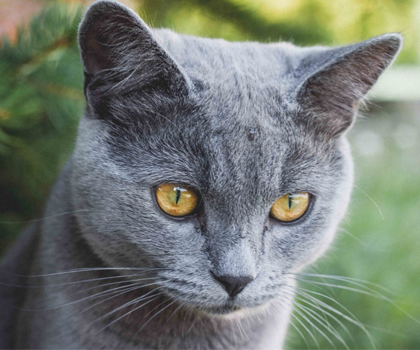
History
Compared to most shorthair breeds, British Shorthairs are relatively calm cats when they mature. They are easygoing in nature and talk infrequently. Very affectionate, they become quite attached to the people they own. British Shorthairs are easily trained and very adaptable. They seem to get along well with all human members of the household, regardless of age, but are usually not fond of being carried. These are sturdy, dense-coated, purring, teddy bear cats with large round eyes. Probably the oldest English breed of cat, the British Shorthair can trace its ancestry back to the domestic cats of Rome. British Shorthairs have no specific breed-related diseases.,
Description
Quiet, soft, affectionate and large. Very mellow and easy going with a short, smooth grey coat complimenting a round face.
Grooming and Physical Needs
Size: 12 to 20 pounds for males, females are slightly smaller ranging from 8 to 14 pounds.
- Grooming Needs: Simple to groom with weekly brushing or combing to remove dead hairs.
- Coat Type: Short, smooth and grey.
- Moulting: Moderate shedder.
- Exercise Needs: This is a rather docile cat breed and may need encouragement to move and play if weight becomes an issue.
- Average Life Span: 12-17 years
- Healthcare: Can be prone to gingivitis and hypertrophic cardiomyopathy.
Behaviour
- Family: Fairly affectionate with family, very mellow and easygoing.
- Temperament: The Shorthair has a quiet voice and is an undemanding companion who loves sitting next to people rather than on them. As a big cat, they often don't like being carried.
- Trainability: Not known for tricks or training.
- Sociability (Other Pets): Well suited to cat friendly dogs due to its size and often fine with presence of other cats.
- Meowing: Very quiet voice, used sparingly.
Notes
Infromation Courtesy of The Governing Council of the Cat Fancy Australia and Victoria Inc
